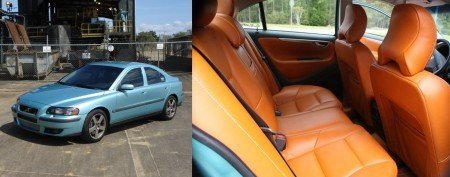The Trick of the Launch Color

Suppliers print brochures, lawyers pour over owner’s manuals. Focus groups voice opinions on everything from interior materials to sunroof size. Years after work started, the car finally reaches the market.
And then it’s ruined by the launch color.
Ah, the launch color – one of the automotive industry’s great difficulties. You see, when a car launches, you can’t simply show it off in gray, silver, black, white or some other color people may actually purchase. Instead, it must be an attention-grabbing hue conceived by marketers who forget that sometimes, their company must actually sell cars to make money.
This concept is not lost on dealers. Once brightly-colored launch cars make their way through the press trips, the dealer training and the technician academies, they arrive at the dealership, never to leave again except with $8,000 in the trunk.
Three notorious examples of failed launch colors come to mind. One is the absolute default vehicle for this topic: the 2004 Volvo S60R. Intended to kick off Volvo’s high-performance “R” line, it launched in a bright turquoise called Flash Green. It gets worse. Many of the early models also had an interior Volvo called Atacama, which was PR-speak for “bright orange.”
Now, before Swedespeed brings their prancing moose tattoos over here to light up the comments, I have a confession to make. I actually like this color. In fact, I’ve even looked at buying S60Rs in this color. But I’m always stopped by one key realization: someday, I’ll have to sell it.
Perhaps a better-known example of a launch color flop is the original SLK, which Mercedes aimed at young, hip car shoppers. They did this the only way Germans know how: by painting it yellow. Surprising no one except Mercedes itself, yellow failed to catch on. And while they offered it a few more years after its release, you can rest assured every yellow SLK you see on the road belonged to the initial run of 1998 models.

Cadillac was also trying to court young buyers when it launched the CTS in 2003. So they went with a special color called Copper Sunburst, which was similar to the popular Liquid Copper Infiniti used on the FX that same year. The result: old people were confused. And young people, as usual, wanted nothing to do with such a flashy color. These days, Copper Sunburst brings up the rear among used CTS values.

There have, on occasion, been times when automakers got launch colors just right. Again, three come to mind.
One is the original Range Rover Sport, which launched in Vesuvius Orange just a few years after Cadillac’s similar color flopped. Apparently forgetting that they were buying a bright orange Range Rover, people actually placed so many orders for this color that Land Rover couldn’t keep up with demand. Love it or hate it, this color launched the Range Rover Sport with a bang. Of course, that’s the same sound its air suspension made as soon as the warranty expired.

Copper also worked for Volvo, who launched the original C70 in a color called Saffron. I’m of the rare belief that with the right wheels, in coupe form, wearing this color, the early C70 was one of the most attractive cars of our time. But even that couldn’t convince buyers to spend Mercedes money for a front-drive Volvo with Camry power.

Perhaps the most successful launch color of all was dreamed up by Kia for an ad with rodents. Alien Green came to define the Kia Soul, so much that dealers were – in an auto industry first – actually stocking the launch color. You can still buy it today and many people do, proving that maybe a car doesn’t have to be black or silver to sell.
Unless it’s an SLK.

Related News


